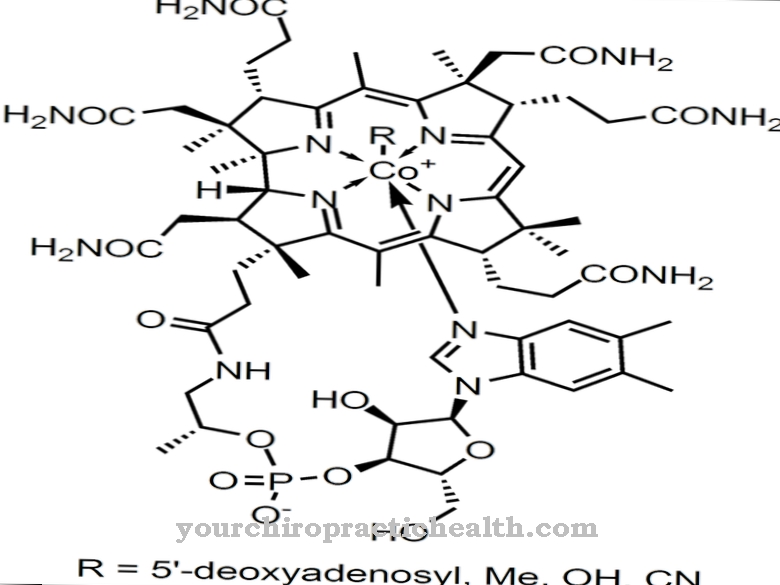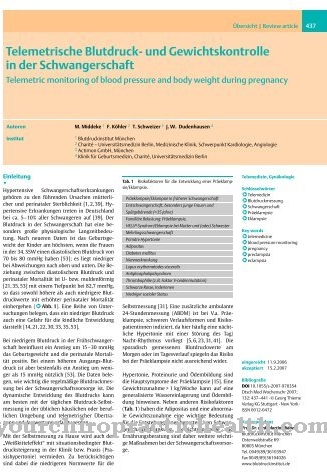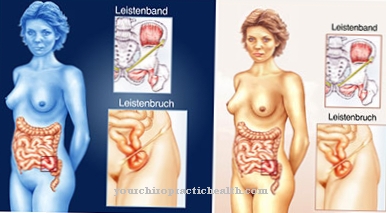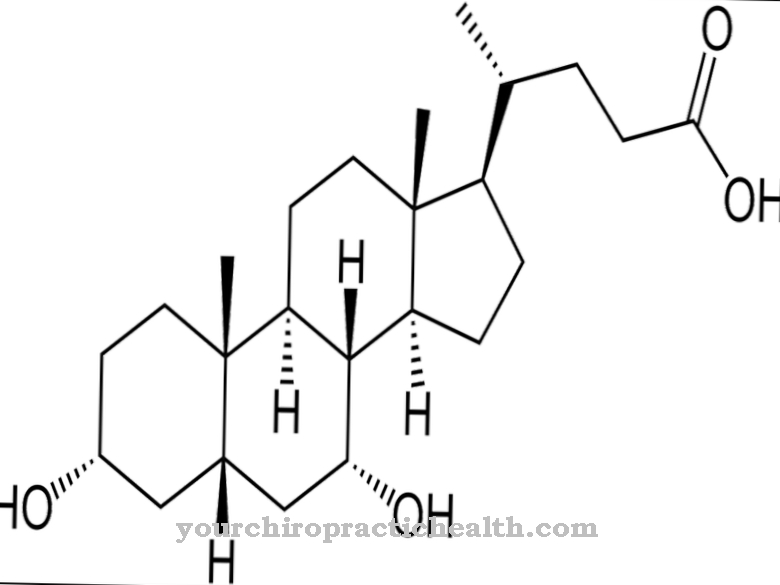"Except for measles and other childhood illnesses, I've never been seriously ill!" Is how patients often report when asked as a doctor about the history of their current condition. The fact that almost every person in the European industrialized countries with their high population density survives measles as a child makes this disease appear in the memory of the individual as a harmless episode with interruptions to kindergarten or school. Of course, adults can no longer think about the worries and troubles that our mothers had with their children with measles.
Causes & Transmission of Measles
Measles as an acute infectious disease has so far been unavoidable, despite exemplary body hygiene and the high standard of living of the population. Measles is so contagious that practically every child becomes infected after meeting someone with measles and eleven days later becomes ill with a fever and acute inflammation of the eyes and the nasopharynx. Another three days later, the large-patch rash on the neck and behind the ears begins.
The causative agent of this disease is the measles virus, which has been successfully cultivated for many years on tissue cultures, for example on human cancer cells or on incubated chicken eggs. The measles virus can be grown from the patient's throat rinse water, from his nasal secretions and the conjunctival sac, and from the blood 48 hours before the rash begins. The measles pathogen is extremely volatile and very soon loses its viability outside the human body because it is quickly destroyed by the sun and air. It is therefore not transmitted through dead objects, but exclusively through direct contact with a sick person or through droplet infection.
There are no healthy germ carriers in measles. But a draft of air can spread the measles pathogen to a distance of a few meters through cracks in doors and open windows. Infectivity is greatest at the onset of the disease during the first few days of fever, and once the rash fades, the risk of infection ceases.
Measles in children
If a child has survived measles, it usually retains lifelong protection against this disease. If a child has measles for the second time, concerns about the correctness of the earlier diagnosis are justified. Rubella - especially if the rash is severe - can be similar to measles. The susceptibility to measles is about the same in every age. The only exception is the first quarter of life, but only on the condition that the mother has survived measles herself in her life, so that she could give her child protective substances - as an immunizing dowry - on her way through life. However, beyond the fourth month of life this maternal protection is no longer valid.
Measles is always present in our big cities. Due to the fact that measles is easy to transfer, this fact and the high willingness to become ill mean that measles is usually acquired in infancy and preschool age. Measles reaches the countryside from the cities - through people, of course - via traffic routes and can trigger real epidemics there in villages and smaller towns. The "incubation time" of measles is extremely constant: parents must expect that exactly 11 days after their child is infected, fever and symptoms of inflammation will occur; on the 14th day the rash appears.
Symptoms & course of disease
The doctor is often able to identify the measles before the rash starts. For the siblings of the measles child, the medical diagnosis usually comes too late, because the infection has already occurred, so that the siblings usually become ill in the same way two weeks later. Signs of the onset of measles include photophobia (sensitivity to light) and conjunctivitis, severe runny nose and dry, dry cough. On the second or third day of fever, you can see punctiform spots of white color on the mucous membrane of the cheek that look like milk residue but cannot be wiped away. Overnight, usually with a steep rise in fever, the rash breaks through.
It shows up on the face, behind the ears, on the neck and on the back between the two shoulder blades. In the course of the next few days it wanders over the whole body, over arms and legs to the fingers and toes. Somewhat pale, healthy skin can still be seen between the reddened, mostly jagged or star-shaped areas of skin that are initially light red, later more violet-red. After three days, the face fades again first. In the next few days the fever will decrease and with it the rash will also go away completely.
The general well-being of the measles sick child is in most cases severely impaired. The light-shy children are tearful, have no appetite and cannot be satisfied by anything. Many children appear apathetic and doze off. The inflamed eyelids stick together over the course of the night, the nose secretes a purulent mucus that makes the upper lip sore and sometimes even causes a trunk-shaped swelling of the upper lip. The tongue is often heavily coated, breathing is accelerated, as is the pulse, so that the parents - appalled by the severe clinical picture of their high-fever, sometimes slightly dazed child - call the doctor several times and the doctor is already considering admitting the child to a children's clinic.
At this stage of the disease, however, the child with measles is highly contagious for all other children in the clinic; it must therefore be strictly isolated within the clinic or placed in an infection department for measles sufferers. This imperative requirement only allows a measles child to be admitted to inpatient treatment in rare cases. Rather, the doctor feels compelled to constantly monitor the child's condition through several house calls.
Complications from measles
As a rule, he is able to calm the parents down after a few days, because after the rash has subsided, the child tends to recover quickly. The widespread opinion that sick children should be housed in darkened rooms is completely wrong. It is never necessary to stay in a darkened room.
The described, normal course of measles is unfortunately often made more difficult by complications, accompanying and secondary diseases, especially if an additional infection with pus affects the child who has lost resistance. The most common in this context is an inflammation of the smallest bronchial tubes, which eventually turns into a mostly bilateral pneumonia. With this complication, the measles rash often becomes quite indistinct and fades very quickly, so that it is popularly said that "the rash has turned inwards". Renewed fever and accelerated and groaning breathing, during which the distended nostrils move, allow laypeople to recognize pneumonia in the measles child at an early stage. People with measles with pneumonia recover best in the fresh air.
The measles croup is rightly feared most, which is announced by a barking cough and a hoarse voice. Especially in children between the ages of 2 and 4, in addition to complete voicelessness, there is also a sounding (whooping) inhalation, which is accompanied by deep retractions of the chest as an expression of the severe shortness of breath. Such conditions of severe shortness of breath as a result of the swelling of the mucous membrane in the area of the glottis can lead to fatal asphyxiation if medical help is not sought in good time.
Measles children with croup of the larynx must be treated clinically. A mostly double-sided otitis media is one of the common complications after measles, which usually occurs during the second week of illness. Today, however, this clinical picture can be managed well with penicillin and other antibiotic drugs. If a child with measles also has convulsions, if their consciousness becomes clouded and drowsiness and paralysis occur, there are signs of encephalitis. Such a serious complication makes inpatient treatment absolutely necessary because all the tools of modern paediatrics must be used in order to control the disease of the central nervous system and to prevent permanent disorders of the sensory organs.
prevention

Because of the possibility of such complications, pediatricians do not count measles as a harmless childhood disease. Children of crèche age not only get measles very often, they can even fall victim to measles complications. Measles also play an important role with regard to the continuous use of our day nurseries and nurseries. In order to free working mothers from worries about their children, doctors and nurses, but also parents must do everything that can help to prevent measles as much as possible. For this reason, siblings of children with measles can no longer be brought to a day nursery or day nursery, as they must already be considered infected and endanger the other children.
If an infected child is already in a day nursery or on a children's ward, the leaders must be informed so that all other children are spared as far as possible from the outbreak of a measles epidemic. Measles are particularly complicated in children of the first three years of life. Therefore, children of this age should never be intentionally exposed to measles infection. For some mothers, the time that children with measles have to stay away from day care centers and schools seems too long. However, the doctor must make sure that the children stay away from the children's facilities and schools for 14 to 16 days after the rash has subsided.
It is also very important to ensure that children whose siblings or playmates have contracted measles are not vaccinated so that the measles outbreak and the vaccination reaction do not coincide. However, these measures are not yet sufficient for effective measles control. Therefore in Germany the reporting obligation for every measles illness has been introduced. Only in this way is it possible for the responsible medical authorities to initiate measures in good time to contain the spread of the disease. For some years now, children who have already been infected have been able to prevent the outbreak of the disease by injecting antibodies into the children during the first two days after infection.
This serum component is so rich in protective substances that - when injected at the right time - complete, if only temporary, protection can be achieved. This measles prophylaxis is preferable for sick children who have been infected with measles within a group; But a measles infection chain can also be broken in this way in day nurseries and homes. The best option, however, is to get rid of measles with the help of a vaccination. After the vaccination, the children get so-called "vaccine measles" after about eleven days, which are accompanied by fever and a slight rash, but do not cause any complications and, above all, are not contagious for the person being vaccinated.








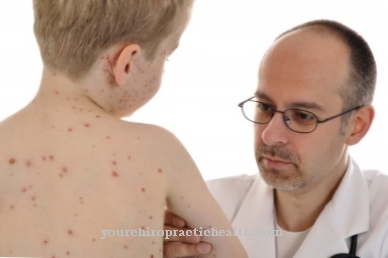




.jpg)


